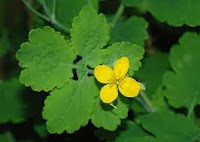The Western Hemlock tree is no relation of the poisonous plant hemlock which caused the demise of Socrates. This tree is native to the North American continent and is grown as an ornamental in Europe and other parts of the world. In the late 19th century, Queen Victoria
 Tsu-ga comes from the Japanese words for tree and mother, and heterophylla is the Greek for having different leaves. It is a member of the Pinaceae family of trees and is related to the pines which bear pine nuts and chilgoza pine nuts. It can grow to heights of 229 feet or 70 metres with a spread of 49 feet or 15 metres. It is an evergreen coniferous tree whose wood is used in construction, for cabinets and ladders among other items. It is easily carved and Native Americans used it to make spoons and other items. In
Tsu-ga comes from the Japanese words for tree and mother, and heterophylla is the Greek for having different leaves. It is a member of the Pinaceae family of trees and is related to the pines which bear pine nuts and chilgoza pine nuts. It can grow to heights of 229 feet or 70 metres with a spread of 49 feet or 15 metres. It is an evergreen coniferous tree whose wood is used in construction, for cabinets and ladders among other items. It is easily carved and Native Americans used it to make spoons and other items. In In the UK US
Native Americans used its inner bark raw or cooked and dried and ground into powder to be mixed with cereal flour for bread, or to thicken soups and stews. The inner bark was harvested in spring and dried for winter use when food was scarce. The leaves and twigs of the Western Hemlock yield an oil known as “spruce oil” which is used commercially to flavour chewing gum, ice-cream and soft drinks.
Pitch is obtained from crevices in the bark which is a resinous substance which can be chewed like gum. A tisane can be made from the young leaves and tips which are an ingredient of “spruce beer”. These can be eaten to survive if one is lost in the woods.
The bark has astringent qualities as well being used in a decoction to promote sweat during fevers and as a diuretic. A decoction of the pounded bark was once used for haemorrhages, syphilis and T.B. The boiled bark and liquorice root was also used to stop haemorrhaging. An infusion of the inner bark or twigs was used for kidney and bladder problems and as a gargle and mouthwash for throat and mouth problems, as well as being applied to sores and ulcers on the skin. The powdered bark can be put inside shoes to eliminate foot odour and to help sweating feet. The gum or resin from the truck obtained by cutting it was used to prevent chapping and sunburn in severe weather conditions.
 Native Americans chewed the leaves and then used them as a poultice for burns. They obtained a red dye from the bark and used this for colouring goat wool and basket weaving materials as well as for facial decoration. The pitch obtained by distilling the young branches was rubbed onto the scalp and hair to get rid of head lice. The pitch mixed with deer tallow was also rubbed into the chest to alleviate the symptoms of colds and flu, and this was also used as an ointment to prevent sunburn.
Native Americans chewed the leaves and then used them as a poultice for burns. They obtained a red dye from the bark and used this for colouring goat wool and basket weaving materials as well as for facial decoration. The pitch obtained by distilling the young branches was rubbed onto the scalp and hair to get rid of head lice. The pitch mixed with deer tallow was also rubbed into the chest to alleviate the symptoms of colds and flu, and this was also used as an ointment to prevent sunburn. This tree has a number of very useful purposes, unlike the poisonous hemlock which shares its name.















